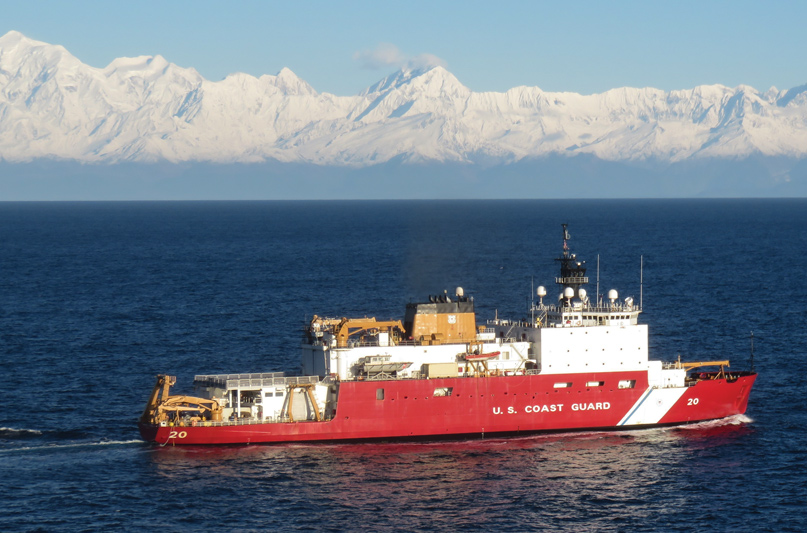 Following a 129-day summer deployment to the Arctic, the U.S. Coast Guard Cutter Healy has returned to her home port of Seattle. Besides the Healy’s primary mission of providing American presence and breaking ice for accessibility, the crew conducted several research missions in partnership with the National Science Foundation (NSF), the Office of Naval Research (ONR), and National Oceanic and Atmospheric Administration (NOAA).
Following a 129-day summer deployment to the Arctic, the U.S. Coast Guard Cutter Healy has returned to her home port of Seattle. Besides the Healy’s primary mission of providing American presence and breaking ice for accessibility, the crew conducted several research missions in partnership with the National Science Foundation (NSF), the Office of Naval Research (ONR), and National Oceanic and Atmospheric Administration (NOAA).
The NOAA-sponsored mission involved getting a better understanding of the changing biological situation in the Arctic and mapping offshore ocean currents in the Chukchi and Beaufort Seas. The mission for naval research was part of a multi-year project studying the effects of water inflow and surface force changes on ocean stratification and sea ice. Part of this study involved placing subsurface moorings on the seafloor, which will remain there until next year. The goal of Healy’s NSF-associated mission was to understand the effects of Pacific and Atlantic water inflow on the Arctic ecosystem.
Commissioned in 2000, the CGC Healy is the nation’s most technologically advanced northern latitude research vessel and ice breaker. Under the command of USCG Captain Greg Tlapa, the Healy has 4,200 square feet of laboratory space and accommodations for 50 scientists. She has a total length of 420 feet, a displacement of 16,000 tons, and a permanent crew of 87.
Besides its scientific missions, the Healy performs search and rescue missions, ship escorts, and enforcement of U.S. laws and treaties in the Polar Region. The U.S. Coast Guard has been the nation’s sole provider of polar ice breaking service since the 1960s and is looking to increase its total number of ice-breakers
Welcome home to the crew of the Healy!